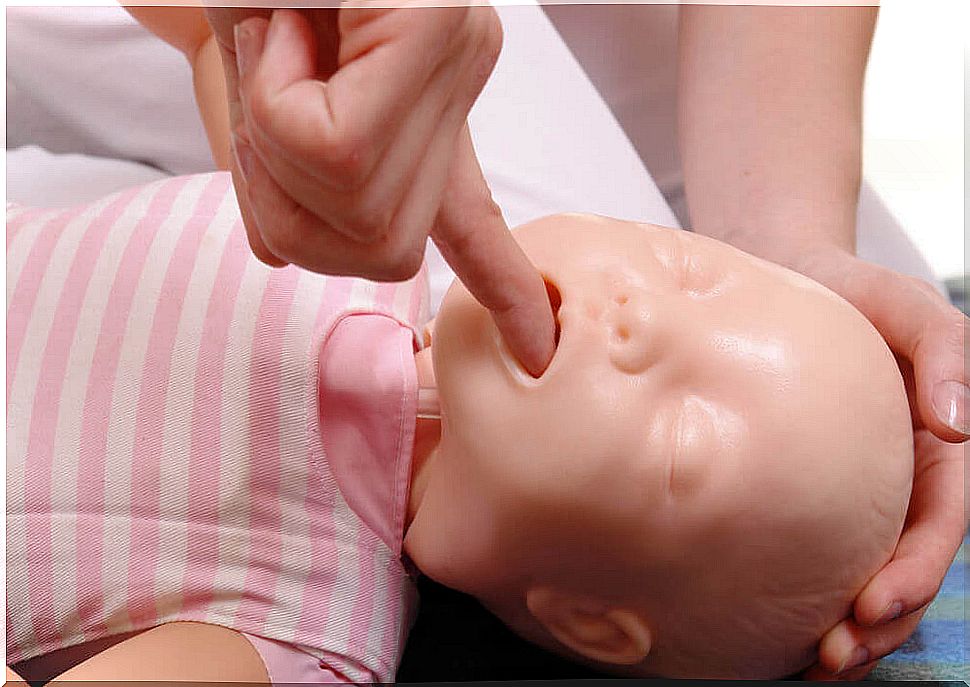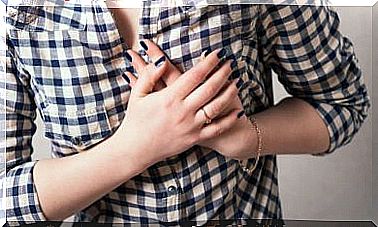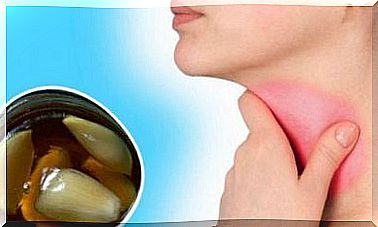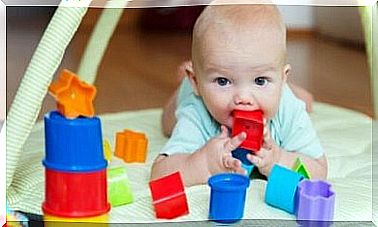Newborn Resuscitation Maneuvers

Newborn resuscitation maneuvers refer to situations that no one would like to have to face, much less when it comes to their own child. However, knowing them can make the difference between life and death.
Cardiopulmonary resuscitation, or CPR, is a life-saving procedure that is used in case of respiratory or heart failure. The resuscitation maneuvers of the newborn that we are talking about in this article do not replace the CPR course.
If you have children or care for children, it won’t hurt to take a resuscitation course. Also, keep in mind that CPR of a newborn is different from the one that applies to the child when he or she gets older.
When should CPR be used?
Children are born explorers. In their interest in the world around them, they can become victims of accidents that endanger their lives. For this reason it is important that parents or guardians pay attention to their movements and reduce any risk factors.
When an accident occurs, time is of the essence. If a newborn is unconscious and not breathing, it takes 4 minutes without oxygen for permanent brain damage to occur; after 4 or 6 minutes death can occur.

If a baby starts making strange noises or makes no sound and the skin color changes, it can be asphyxiation. You need to act quickly and stay calm to successfully complete the life-saving procedure.
What causes asphyxia and / or cardiac arrest?
- Choking on small objects, such as buttons, coins, toys or food.
- A lung disease that gets worse.
- Poisoning from food, drugs, or toxic substances.
- Drowning in the pool or bathtub.
- A jolt.
- Excessive bleeding from a wound.
- Brain trauma or another serious injury following a fall.
How to perform the resuscitation maneuvers of the newborn?
1. Quickly assess the situation
If the baby coughs and has difficulty breathing and his skin changes color, help him to expel what is blocking the passage of air. Coughing is the natural mechanism for clearing the obstruction.
When the child is unconscious, resuscitation maneuvers must be performed to restore the heartbeat and breathing. Ask someone to call an ambulance while you rescue the little one.
If you are alone, don’t leave the baby alone to make the phone calls. First do cardiopulmonary breathing for two minutes and then call for help, without ever losing sight of the baby. The procedure must be done with great care and delicacy.
2. If the child is conscious, help him expel what is choking him
- Support him on the forearm with his stomach up and with the same hand support the neck and head. Place your other hand and forearm over the baby so that he is in the middle of your arms.
- With the other hand, use your thumb and forefinger to support the baby’s jaw. Turn him on his stomach, resting him on your forearm. Rest with the forearm on the thigh, the baby’s head must be facing down towards his chest.
- With your free hand, give him five firm strokes between the shoulder blades to help him expel the object that is choking him. Support his jaw to support his head and neck as well.
- If it does not eject the object, use your free hand (with which you gave the blows) to rest it on the back of the child’s neck by stretching your arm over his spine. Always turn him while supporting his chest with your hand and forearm.

- With the hand supporting the head, use your thumb and index finger to support the baby’s jaw. Place the arm that supports the child’s back on the thigh, making sure that the head is facing the body.
- Place the tips of two or three fingers on the baby’s chest, at the height of the nipples. Press so that the chest compresses about 3.4 centimeters. Let it return to its normal position, without taking your fingers off the breastbone
- Do 5 chest compressions, light, never abrupt. Repeat the process: turn the baby over and tap him five times between the shoulder blades, then repeat the chest compressions until he expels the object or starts coughing or breathing on his own.
3. If the child is unconscious, perform resuscitation maneuvers
- Check if the child is unconscious. Call him, watch the chest move and try to listen to the breathing.
- Place the baby on his stomach on a hard surface. With one hand, support his forehead, bringing his head back. With the other hand, apply pressure to the baby’s chest, which must lower by 3, 4 centimeters, and then let him rise.
- Perform 30 compressions. Count them quickly and without pauses until you reach 30.
- Open your airways. Lift his chin with one hand while pushing his head back with the other hand on the forehead.
- Check if he breathes : bring the ear close to the baby’s nose and mouth. See if the chest rises and falls and listen to the breathing.
- If the baby is not breathing, cover his mouth and his nose with your mouth or just his nose while keeping his mouth closed. Blow out twice for one second until you see the baby’s chest rise.
- If the baby is still not breathing, try to see what is blocking his airways. If you can see the object, use your little finger to pull it out. Repeat the compressions and the two breaths until the baby is revived or help arrives.

What other precautions should be taken before resuscitation maneuvers?
If there is a possibility of a spinal injury, avoid bending your head and neck. The ideal would be to move the baby with the help of another person. Also, if the baby is bleeding, check for the bleeding first.
The child should never be left alone in the event of an accident. Calling the ambulance and help as soon as possible is very important, but if you are alone, practice the first two minutes of CPR and then make the phone call, without ever losing sight of the baby.
If you have an automated external defibrillator handy, you can avoid CPR. These devices are equipped with pads or plates to put on the chest and which automatically detect the heart rhythm.
They will immediately give a shock if they detect that the heart needs it to recover its rhythm, but first make sure that the device can be used with newborns. The instructions for use must be followed to the letter for resuscitating a newborn.









